sphero ultra rainbow fluorescent particles
Description
Extremely Rainbow Fluorescent Particles (by Spherotech™) are internally labeled with a number of fluorophores. They exhibit full spectrum fluorescence, together with enhanced UV and Far Crimson fluorescence. The combination of fluorophores permits Extremely Rainbow particles to be excited at any wavelength from 365 to 650nm. These particles can be found in two diameters, ~3.8µm and ~10.2µm.
Traits
Imply Diameter: ~3.8µm (3.61-3.99µm) or ~10.2µm (8.1 – 12.0µm);
see your Certificates of Evaluation for precise dimension.
Focus: ~2 x 106 particles/mL
Storage Buffer: Deionized water with 0.02% sodium azide and 0.01% NP-4O
Process
A dilution of 1-2 drops to 1mL will present an enough variety of particles for stream cytometry use.
Notes
Shake vigorously or vortex briefly earlier than use. Inclusion of a small quantity of detergent within the diluent will assist enhance the variety of singlets. Diluted particles may be saved within the fridge for future use.
Storage and Stability
Retailer at 2-8˚C. Freezing particles might lead to irreversible aggregation and lack of binding exercise. The product is anticipated to be steady for 12 months from the date of buy, offered that it’s dealt with in accordance with
the producer’s suggestions. The reagent needs to be saved in its opaque bottle.
Security
This particle suspension incorporates sodium azide. Sodium azide might react with lead and copper plumbing to type explosive metallic azides. Upon disposal of fabric, flush with a big quantity of water to forestall azide accumulation.
Please seek the advice of the Materials Security Information Sheet for extra info.
Description
This product incorporates a single inhabitants of Rainbow Particles which are dyed to a single fluorescent depth. Each Rainbow Particle incorporates a combination of fluorophores which are stably embedded inside the particle and may be excited at any wavelength from 365-650 nm, permitting most channels in a stream cytometer to be calibrated utilizing the identical set of particles. The Rainbow Particles have emission spectra appropriate with many frequent fluorophores used for immunofluorescent staining by stream cytometric evaluation. Rainbow Fluorescent Particles are offered in a dropper bottle for handy dishing out and storage.
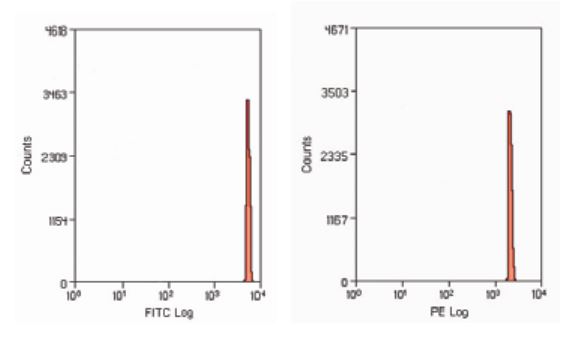
| SPHERO Rainbow Fluorescent Particles – A single inhabitants of Rainbow Fluorescent Particles for the alignment of FITC, PE, PE-TR, and PE-Cy5 channels |
|||||
|
Catalog No.
|
Description
|
Focus
|
Nominal Dimension
|
Bundle Dimension
|
Value
|
|
RFP-20-5
|
Rainbow Fluorescent Particles (Depth just like brightest peak in RCP-20-5)
|
107/mL
|
1.8-2.2 µm
|
5 mL
|
$245.00
|
|
RFP-30-5 (1 peak)
|
Rainbow Fluorescent Particles (Depth just like brightest peak in RCP-30-5)
|
107/mL
|
3.0-3.5 µm
|
5 mL
|
$255.00
|
|
RFP-30-5A (1 peak)
|
Rainbow Fluorescent Particles (Depth just like mid vary FL1 fluorescence in RCP-30-5)
|
107/mL
|
3.0-3.Four µm
|
5 mL
|
$255.00
|
|
RFP-35-5
|
Rainbow Fluorescent Particles (Depth just like brightest peak in RCP-35-5)
|
107/mL
|
3.5-4.Zero µm
|
5 mL
|
$255.00
|
|
RFP-50-5
|
Rainbow Fluorescent Particles
|
107/mL
|
5.0-5.9 µm
|
5 mL
|
$265.00
|
|
RFP-60-5
|
Rainbow Fluorescent Particles (Depth just like brightest peak in RCP-60-5) (Beneficial for FL1, FL2, and FL3 channels solely)
|
107/mL
|
6.0-6.Four µm
|
5 mL
|
$265.00
|
|
RFP-70-5
|
Rainbow Fluorescent Particles
|
107/mL
|
6.5-8.Zero µm
|
5 mL
|
$265.00
|
|
RFP-100-2
|
Rainbow Fluorescent Particles
|
107/mL
|
8.1-12.Zero µm
|
2 mL
|
$210.00
|
Beneficial Assay Procedures
This particle combination (~10×10^6 particles/mL) is beneficial for routine calibration of stream cytometers. Earlier than use, resuspend the particles by vortexing. Dilution of 3-5 drops of particles to 1 ml of sheath fluid will present an enough variety of particles for stream cytometric evaluation.
Product Notices
- Warning: Sodium azide yields extremely poisonous hydrazoic acid beneath acidic circumstances. Dilute azide compounds in working water earlier than discarding to keep away from accumulation of probably explosive deposits in plumbing.
- Cy is a trademark of GE Healthcare.
 Mouse Monoclonal anti-Human CCL-11 |
|||
| hAP-0136 | Angio Proteomie | 100ug | EUR 250 |
 Mouse Monoclonal anti-Human CCL-11 |
|||
| hAP-0136A | Angio Proteomie | 100ug | EUR 250 |
 Mouse Monoclonal anti-human CCL-28 |
|||
| hAP-0153 | Angio Proteomie | 100ug | EUR 250 |
 Mouse Monoclonal anti-human CCL-28 |
|||
| hAP-0153A | Angio Proteomie | 100ug | EUR 250 |
 Mouse Monoclonal anti-Human CCL-1 |
|||
| hAP-0135 | Angio Proteomie | 100ug | EUR 250 |
) Mouse Monoclonal anti-human CCL-22 (MDC) |
|||
| hAP-0147 | Angio Proteomie | 100ug | EUR 250 |
) Mouse Monoclonal anti-human CCL-17 (TARC) |
|||
| hAP-0141 | Angio Proteomie | 100ug | EUR 250 |
) Mouse Monoclonal anti-human CCL-17 (TARC) |
|||
| hAP-0141A | Angio Proteomie | 100ug | EUR 250 |
) Mouse Monoclonal anti-human CCL-18 (PARC) |
|||
| hAP-0142 | Angio Proteomie | 100ug | EUR 250 |
) Mouse Monoclonal anti-human CCL-25 (TECK) |
|||
| hAP-0150 | Angio Proteomie | 100ug | EUR 250 |
) Mouse Monoclonal anti-human CCL-27 (CTACK) |
|||
| hAP-0152 | Angio Proteomie | 100ug | EUR 250 |
) Mouse Monoclonal anti-human CCL-27 (CTACK) |
|||
| hAP-0152A | Angio Proteomie | 100ug | EUR 250 |
) Mouse Monoclonal anti-human CCL-21 (6Ckine) |
|||
| hAP-0146 | Angio Proteomie | 100ug | EUR 250 |
) Mouse Monoclonal anti-human CCL-24 (Eotaxin) |
|||
| hAP-0149 | Angio Proteomie | 100ug | EUR 250 |
) Mouse Monoclonal anti-human CCL-5 (RANTES) |
|||
| hAP-0155 | Angio Proteomie | 100ug | EUR 250 |
) Mouse Monoclonal anti-human CCL-5 (RANTES) |
|||
| hAP-0155A | Angio Proteomie | 100ug | EUR 250 |
 Rat-MIP1γ CCL-9- |
|||
| QY-E11948 | Qayee Biotechnology | 96T | EUR 420 |
 Anti-Mouse CCL-11 Antibody |
|||
| 103-M321 | ReliaTech | 100 µg | EUR 399 |
|
Description: CCL11 is a potent eosinophil chemoattractant that was originally purified from bronchoalveolar lavage fluid of guinea pigs sensitized by aerosol challenge with ovalbumin. Mouse CCL11 cDNA encodes a 97 amino acid (aa) precursor protein from which the aminoterminal 23 aa are cleaved to generate the 74 aa mature mouse CCL11. At the protein sequence level, mature mouse CCL11 is approximately 60% identical to mature human and guinea pig CCL11. In addition, mouse CCL11 also shows high aa sequence identity to members of the MCP family. Mouse CCL11 is chemotactic for eosinophils, but not mononuclear cells or neutrophils. CCL11 mRNA is expressed in a variety of tissues. The expression of CCL11 mRNA is induced in cultured endothelial cells in response to IFNγ. In addition, CCL11 mRNA is also induced in response to the transplantation of IL4secreting tumor cells. The CC chemokine receptor 3 (CCR3) has been identified as a specific human CCL11 receptor. |
|||
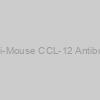 Anti-Mouse CCL-12 Antibody |
|||
| 103-M322 | ReliaTech | 100 µg | EUR 399 |
|
Description: CCL12 is a cloned mouse CC chemokine most closely related to human MCP1 (66% amino acid (aa) sequence identity in the mature protein). Mouse CCL12 encodes a 104 aa residue precursor protein with a 22 aa residue predicted hydrophobic signal sequence that is cleaved to generate a 82 aa residue mature protein. CCL12 is expressed constitutively in the thymus and lymph nodes. Under inflammatory conditions, CCL12 expression is also induced in activated macrophages and mast cells. The gene for mouse MCP1 has been mapped to the CC chemokine cluster on chromosome 11. Recombinant CCL12 has been shown to be a potent chemoattractant for monocytes and lymphocytes but not neutrophils. At high concentrations, CCL12 will also chemoattract eosinophils. CCL12 has been found to be a functional ligand for CCR2 but not CCR1, CCR3, or CCR5. |
|||
 Anti-Mouse CCL-17 Antibody |
|||
| 103-M323 | ReliaTech | 100 µg | EUR 399 |
|
Description: Human thymus and activationregulated chemokine (TARC) also known as CCL17, is a novel CC chemokine identified using a signal sequence trap method. Mouse CCL17 was discovered as a dendritic cell (DC) specific gene by differentiation RNA display. Mouse CCL17 cDNA encodes a highly basic 93 amino acid (aa) residue precursor protein with a 23 aa residue putative signal peptide that is cleaved to generate the 70 aa residue mature secreted protein. Among CC chemokine family members, CCL17 has approximately 24-29% amino acid sequence identity with RANTES, MIP1α, MIP1β, MCP1, MCP2, MCP3, and I309. The gene for human CCL17 has been mapped to chromosome 16q13 rather than chromosome 17 where the genes for many human CC chemokines are clustered. Mouse CCL17 is constitutively expressed in thymic DC, and at a lower level in lymph node DC in the lung. Recombinant CCL17 has been shown to be chemotactic for T cell lines and antigen-primed T helper cells. In humans, CCL17 was identified to be a specific functional ligand for CCR4 and CCR8, receptors that are selectively expressed on T cells. |
|||
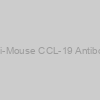 Anti-Mouse CCL-19 Antibody |
|||
| 103-M324 | ReliaTech | 100 µg | EUR 399 |
|
Description: CCL19/MIP3β, also known as ELC (EBI1Ligand Chemokine), is a β chemokine that binds specifically to the chemokine receptor CCR7/EBI1/ BLR2. Mouse (human) CCL19 cDNA encodes a 108 (98) amino acid precursor protein with a predicted 25 (21) aa signal peptide that is cleaved to form the 83 (77) aa mature secreted protein. CCL19 is distantly related to other β chemokines (20-30% aa sequence identity). Mouse CCL19 shares 83% aa sequence homology with human CCL19. CCL19 has been shown to be constitutively expressed in various lymphoid tissues (including thymus, lymph nodes, appendix, and spleen) in dendritic cells within the T-cell zone. The expression of CCL19 is downregulated by the antiinflammatory cytokine IL10. Recombinant CCL19 has been shown to be chemotactic for Tcells and Bcells. The CCL19 receptor (CCR7/ EBI1/ BLR2) is expressed in various lymphoid tissues and activated B and T lymphocytes. CCR7 is also strongly upregulated in Bcells infected with EpsteinBarr virus and T-cells infected with herpesvirus 6 or 7. |
|||
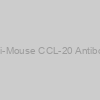 Anti-Mouse CCL-20 Antibody |
|||
| 103-M326 | ReliaTech | 100 µg | EUR 399 |
|
Description: Macrophage inflammatory protein 3 alpha (MIP-3α) is a member of the CC chemokine superfamily and has been designated CCL20. CCL20 is a β chemokine that is strongly up-regulated by inflammatory signals and down-regulated by the anti-inflammatory cytokine IL-10. CCL20 binds to CCR6 to promote chemotaxis of lymphocytes and inhibit the proliferation of myeloid progenitors. |
|||
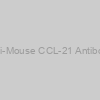 Anti-Mouse CCL-21 Antibody |
|||
| 103-M327 | ReliaTech | 100 µg | EUR 399 |
|
Description: 6Ckine is a novel CC chemokine discovered independently by three groups from the EST database. 6Ckine, also named SLC (secondary lymphoidtissue chemokine), CCL21 and Exodus2, shows 21-33% identity to other CC chemokines. 6Ckine contains the four conserved cysteines characteristic of β chemokines plus two additional cysteines in its unusually long carboxy-lterminal domain. Human 6Ckine cDNA encodes a 134 amino acid highly basic precursor protein with a 23 amino acid residue signal peptide that is cleaved to form the predicted 111 amino acid residue mature protein. Mouse 6Ckine cDNA encodes a 133 amino acid residue protein with a 23 residue signal peptide that is cleaved to generate the 110 residue mature protein. Human and mouse 6Ckine share 86% amino acid sequence identity. 6Ckine is constitutively expressed at high levels in lymphoid tissues such as lymph nodes, spleen and appendix. In mouse, high levels of 6Ckine mRNA are also detected in the lung. Unlike most CC chemokines, 6Ckine is not chemotactic for monocytes. Recombinant mouse 6Ckine is chemotactic in vitro for thymocytes and activated T cells. Recombinant human 6Ckine has been shown to be chemotactic for some human T cell lines, resting PBL, and cultured T cells expanded with PHA and IL2. 6Ckine has also been reported to inhibit hemopoietic progenitor colony formation in a dosedependent manner. 6Ckine acts via the CC receptor CCR7 on T cells and B cells. |
|||
 Anti-Mouse CCL-22 Antibody |
|||
| 103-M328 | ReliaTech | 100 µg | EUR 399 |
|
Description: CCL22, also known as ABCD1 and MDC (macrophage-derived chemokine), is a CC chemokine cloned from activated mouse B cells. Mouse CCL22 cDNA encodes a precursor protein of 92 amino acid (aa) residues with a 24 aa residue predicted signal peptide that is cleaved to yield a 68 aa residue mature 7.8 kDa protein. At the amino acid sequence level, mouse and human CCL22 share 64% identity and 83% similarity. The genomic organization of the mouse and human CCL22 genes are very similar, exhibiting sequence identity at the intron-exon boundaries. Mouse CCL22 is expressed at high levels in dendritic cells and activated B lymphocytes. Low levels of mouse CCL22 mRNA are also detectable in lung, unstimulated spleen cells, lymph node cells and in thymocytes. CCL22 is a functional ligand for the CC chemokine receptor 4. Recombinant or chemically synthesized mature mouse CCL22 has been shown to induce chemotaxis or Ca2+ mobilization in activated mouse and human T cells. |
|||
 Anti-Mouse CCL-24 Antibody |
|||
| 103-M329 | ReliaTech | 100 µg | EUR 399 |
|
Description: Eotaxin2, also named myeloid progenitor inhibitory factor (MPIF2), is a member of the CC chemokine subfamily and is designated CCL24. Eotaxin2 is constitutively expressed in the jejunum and spleen. It can also be induced in the lung by allergen challenge and IL4. LPS and IL4 also differentially regulate the expression of Eotaxin2 in monocytes and macrophages. Mouse Eotaxin2 cDNA encodes a 119 amino acid (aa) precursor protein that shares approximately 58% aa sequence identity with human Eotaxin2. Functionally, Eotaxin2is most closely related to CCL11/Eotaxin and CCL26/Eotaxin3. The three proteins share low sequence homology but have been shown to be potent eosinophil chemoattractants that bind and activate the chemokine receptor CCR3, a receptor that is highly expressed in eosinophils. Eotaxin2 also has the ability to suppress myeloid cell proliferation, a biological function not shared by Eotaxin. |
|||
 Anti-Mouse CCL-25 Antibody |
|||
| 103-M330 | ReliaTech | 100 µg | EUR 399 |
|
Description: CCL25 (thymus expressed chemokine), also known as TECK (thymus-expressed chemokine), is a CC chemokine that is distantly related (twenty some % amino acid sequence identity) to other CC chemokines. Mouse CCL25 cDNA encodes a 144 amino acid residue precursor protein with a 23 amino acid residue signal peptide that is cleaved to yield a 121 residue mature protein. Mouse CCL25 shares 49% amino acid sequence identity with human CCL25. The expresssion of human and mouse CCL25 was shown to be highly restricted to the thymus and small intestine. Although dendritic cells have been demonstrated to be the source of CCL25 production in the thymus, dendritic cells derived from bone marrow do not express CCL25. The gene for mouse CCL25 has been mapped to chromosome 8. |
|||
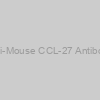 Anti-Mouse CCL-27 Antibody |
|||
| 103-M331 | ReliaTech | 100 µg | EUR 399 |
|
Description: CCL27, also known as CTACK (cutaneous T cel-lattracting chemokine), ALP, ILC, and ESkine, is a member of the CC family of chemokines. Mature mouse CCL27 is a 95 amino acid (aa) protein that shares 57% aa and 87% aa sequence identity with human and rat CCL27, respectively. It shares 18-31% aa sequence identity with other mouse CC chemokines. An alternately spliced form of mouse CCL27, known as PESKY, is localized to the nucleus and promotes cellular migration. CCL27 is constitutively expressed by keratinocytes and is upregulated by inflammatory stimuli and in wounded skin. CCL27 binds the chemokine receptor CCR10, glycosaminoglycans in the extracellular matrix, sulfated tyrosine residues on PSGL1, and determinants on the surface of fibroblasts and endothelial cells. CCL27 cooperates with CCL17/TARC in inducing the migration of cutaneous lymphocyte antigen (CLA) positive memory T cells to the skin during inflammation. Endothelial cellbound CCL27 can mediate the adhesion of those cells to CLA+ T cells. CCL27 also induces the migration of keratinocyte precursors from bone marrow to the skin, thereby promoting wound healing. In humans, serum CCL27 levels are elevated and correlate with disease severity in atopic dermatitis, psoriasis vulgaris, and mycosis fungoides. |
|||
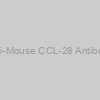 Anti-Mouse CCL-28 Antibody |
|||
| 103-M332 | ReliaTech | 100 µg | EUR 399 |
|
Description: Mouse CCL28 (CC chemokine ligand 28) is a novel CC chemokine cloned from a Rag1 mouse kidney cDNA library. Mouse CCL28 cDNA encodes a 130 amino acid (aa) precursor protein with a 22 aa signal peptide and a 108 aa mature protein. Mature human and mouse CCL28 share 83% aa identity. Among CC chemokines, CCL28 shares the most homology with CCL27/CTACK. Mouse CCL28 is produced by epithelial cells. Based on Northern blot analysis, it is mainly expressed in testes, kidney and brain. The receptor for CCL28 has been identified as the CCR10, which is also the receptor for CCL27/CTACK. |
|||
) Mouse Monoclonal anti-human CCL-13 (MCP-4) |
|||
| hAP-0137 | Angio Proteomie | 100ug | EUR 250 |

